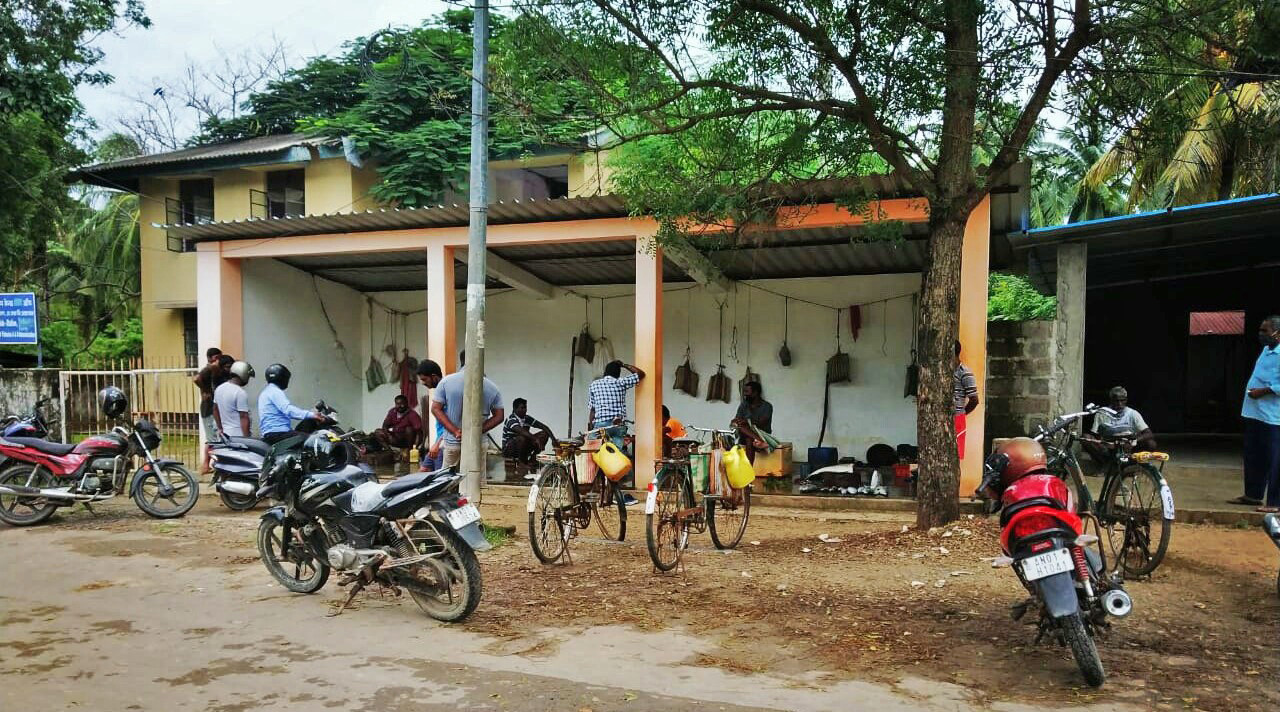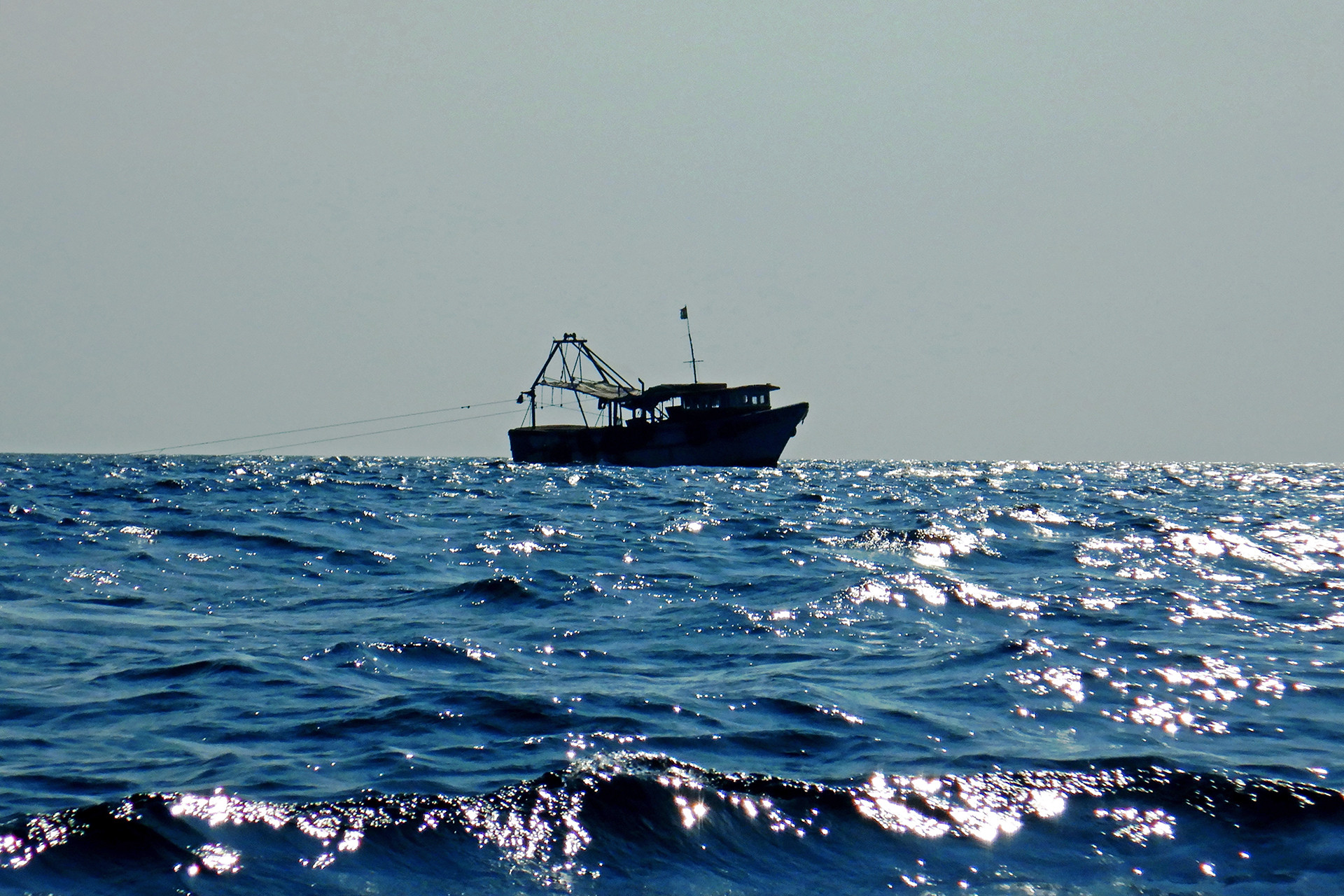It is a typical Andaman afternoon; scorching, exhaustive, and extreme! A moist breeze rubs tiny salt crystals off my face as my gaze is fixed on the distant boats manoeuvring into shallow waters. Roaring engines approach the shore, indicating their return from kamaan (fishing trip). Boats are anchored quickly and left floating on the incoming tide. From a distance, I watch the fishers smothered in sweat, carrying the day’s catch hurriedly towards the local market at Neil Kendra.
As they pass by, I approach one of them to initiate a conversation. And, I am instantly greeted by the smell of the sea – the mixed odour of sweat and fish. My steps try to pace up with his, as I request him to spare a few minutes. “Madam-Ji, talk to the fishers at the market, it is bohani (first sale of the day) time for me,” comes a reluctant answer.
Less than a mile from the jetty, a tiny tin shed supported by two concrete pillars is the designated fish market for this 18.90sq.km. island called Neil – now known as Shaheed Dweep – only a two-hour boat ride away from the capital city, Port Blair. On a regular day like this, the fish market is flooded with locals, resort owners, and sometimes researchers like me. A characteristic fishy odour is not the only clue to the market. If you see a horde of customers hustling to get the freshest catch and a cacophony of luring calls from the hopeful fishers in the background, know that you are at the right place!
After patiently waiting for an hour, my optimism wears off as the Andaman heat gives in, and I intrude: “Bhaiya, if you have time, can we please talk for five minutes? About Paani Suar (dugongs).” “Madam-Ji, discuss with the pradhan (island head) and if he convenes a meeting we are ready to talk,” comes the sharp reply to this meddler, followed by a wave of nods in agreement. The market empties in no time; tired fishers busy distributing profits and a few of them chattering around the chai stall making plans for the evening.
Patience is key
This is how my journey as a dugong researcher in the Andamans began four years ago – caught in a web of contradicting emotions, feeling alienated and optimistic at the same time. Although I knew no one, there was a sense of belonging. The first lesson these fishers taught me was that of patience. I believe patience is an acquired virtue, one which you gain slowly, minute by minute, until it becomes a habit – just the way the fishers have mastered the art of patience as they wait for catch, for hours and days. They return empty-handed at times, but still choose to go back. I too learnt to wait patiently for unaccountable hours just to be able to talk to them, and that became my new normal. Being allowed in their space helped me understand and see the vast seascape through their eyes. Formal greetings gradually turned into stories being shared, over a cup of chai at the fish market. Topics transcended dugongs and seagrasses and with each conversation, a new chapter of the sea and the seamen was explored.
It was not only the local knowledge on dugongs that I was able to document, or the failed fishing lessons that made me happy. It was the bond with the fishers that I cherished all the more. When irritated head shakes turned into smiles and standing alone outside the fish market transformed into effortless sharing of information, I knew that I was being accepted.
Changing times
A year later, not very far from Neil, as I sip on fresh nariyal paani (coconut water), Ram Majhi seems to be lost in his own thoughts, amidst the chaos of passenger boats and touristy selfies at Havelock jetty (now known as Swaraj Dweep). This 63-year-old fisher belongs to the third generation of settlers in Havelock; he started his fishing adventures at the age of 12 when he began helping his father.
Chewing on paan and savouring its flavour, he chronicles the dugong barter done by the Great Andamanese (one of the six indigenous groups of the Andaman Islands) around 50 years ago. “They would arrive with a hunted dugong, place it out at the jetty and ask for ration supplies in return for the meat. This was the time when Paani Suar was found in herds of 25 to 30 individuals, sometimes more.” He then narrates a story that had been passed on to him as a young fisher. “It wasn’t easy to kill a dugong, as the animal would resist strongly with its massive body. The herd was led by a leader and you never target the leader. If done so, the entire herd would counter-attack. So, always hunt the one at the back.”
Two years later, we are sat on the verandah of Ram Majhi’s home. As we are being served steaming chai and biscuits, he is engrossed in cutting supaari (areca nut) for his paan. Meeting and discussing the good, old days of Havelock has become a ritual now, as many things have changed. Ram Majhi has now become daadu (grandfather) for us. Today we are joined by three more fishers, for an informal chat on dugongs and to discuss the pre-tourism era of Havelock. “And the sharks would attack our haleej (a non-motorised boat)", daadu broke the silence. “They would bite off our oars. Life was challenging back then. With no motor dunghis, we would row for three days to reach Outram Island, which is accessible in three hours today. Dugongs and dolphins would swim near the shores in huge numbers.”
Responding to how fishing has changed with time, he replied, “I am a retired fisherman now. I can’t take long fishing routes. But in our time, we did not have to go this far. Although the trips were long as we would use a haleej, the catch was plenty.” When asked about his thoughts on change in fishing ranges, he added, “There are perhaps many reasons for the same. But these trawlers, which come from Port Blair, take away all our fish.”
“If you inspect the areas where trawlers are being operated, it’s a sight beyond description. Around 90 per cent of the total catch is discarded in waters. Floating bodies everywhere – of fish, fingerlings, turtles, sea snakes, and every other possible thing in the water,” remarked one of the fishers who was keenly involved in the conversation. “We urge you to report this to the higher authorities, the trawlers take our fish!” added another fisher who anticipated help.
As the discussion moved from dugongs to trawling and subsidies which exist on paper, but never reach the small-scale fishers, what dawned on me was the realisation of how many more fishers would have similar ordeals to describe. Trawlers in the Islands are operated only from South Andaman and have a vast fishing range that overlaps with those of small-scale fishers. Bottom trawling is one of the most destructive fishing methods, with non-selective hauling of everything alive or dead in the way. The 90 per cent ‘discards’ one of the fishers mentioned could be a frustrated exaggeration of their collective plight, but understanding these changing times and addressing its impact on small-scale fisheries is the need of the hour.
‘One breath’ fishers
In my quest to learn more from fishers about dugongs, I traveled to a village called Karmatang, several miles from Port Blair, situated on the east coast of North Andaman, which is home to the Karen settlers from Burma. Warm and shy people with strong cultural roots, Karens belong to a close-knit community that migrated here long back from Burma and are well-known for their freediving skills. Karmatang is a surreal place, with narrow concrete roads cutting through farms on either side and wooden homes standing on stilts. Towards the village outskirts, past the church, a semi-concrete structure which stands next to a wooden hut is home to Saw Harrow, a 60-year-old retired fisher.
"Our entire village is into organic farming", he had proudly mentioned when we first met in 2017. It’s a cloudy forenoon of May 2019 now, as Saw Harrow narrates his 35-year-long journey in longline and spearfishing. We feel accomplished to have learned to pronounce tho thee, the name for dugongs in the Karen tongue. In the middle of this dialogue, he storms inside his under-construction home and brings back a two-meter-long wooden spear. The head of the spear is fixed with a sharp metal rod that pierces through the prey, while the rear is aided with a catapult-like rubber string which creates momentum. Saw Harrow is keenly watched by his wife Naw Tilda in the background, as he enthusiastically demonstrates his spearfishing talent.
“Aim at the target, stretch the string forward as far as you can and then let it loose. It is simple,” he says, smiling. As we giggle through our pathetically failed attempts at re-enactment, I wonder how this would feel underwater. Imagine yourself, ten metres underwater, as your legs kick and propel you to the depths of the vibrant reef, looking for potential prey. You set your gaze on one lobster and slowly approach the target. You are still, observing keenly, making sure that the potential catch doesn’t escape. When it is time for ambush, all you have is one breath – just one breath to think, nail your catch and surface. Only one breath to be alive!
When you are underwater with one breath, is when you start valuing it, as you know your survival depends on it. The most exciting and scary part of freediving is that there is no scope for making mistakes underwater. Karens, I feel, have mastered this art, cherished it, and ensured its inheritance. "Our ten-year-old kids freedive for lobster fishing", Saw Harrow had once said chuckling. The perfect ease with which they narrate their endeavours is a reminder of the perseverance that is vital to achieve something so fascinating.
What has intrigued me the most through these interactions with fishers is their depth of knowledge and a sound understanding of seascapes, which comes with years of hard work and experience. When a person becomes a human GPS and takes you to the exact same spot in the water, each day, without error, is when you begin to understand their irreplaceably exceptional relationship with the sea. A community, whose existence is defined by the sea, then inevitably becomes central to marine conservation. If only one allows this relationship to flow beyond data collection will you be presented with their incredible patience, perseverance and simplicity, despite changing scenarios of time and tide.
Acknowledgements
I wish to thank my supervisors Dr K. Sivakumar (Scientist F) and Dr J.A. Johnson (Scientist E) from the Wildlife Institute of India, and Dr Himansu Das (Environment Agency, Abu Dhabi), for giving me an opportunity to work in the Andamans and guiding me through my work. I thank my teammates of Campa-Dugong Project for making our work exciting and cherishable! I thank the forest department for their consistent support and encouragement while carrying out the work. Lastly, I feel deeply obliged to thank my friends for pushing me to share this experience, and communities in the Andamans – frontline forest warriors, scuba divers, boat crew and especially fishers for allowing me to be a part of their lives, without whom this work would have been impossible!









